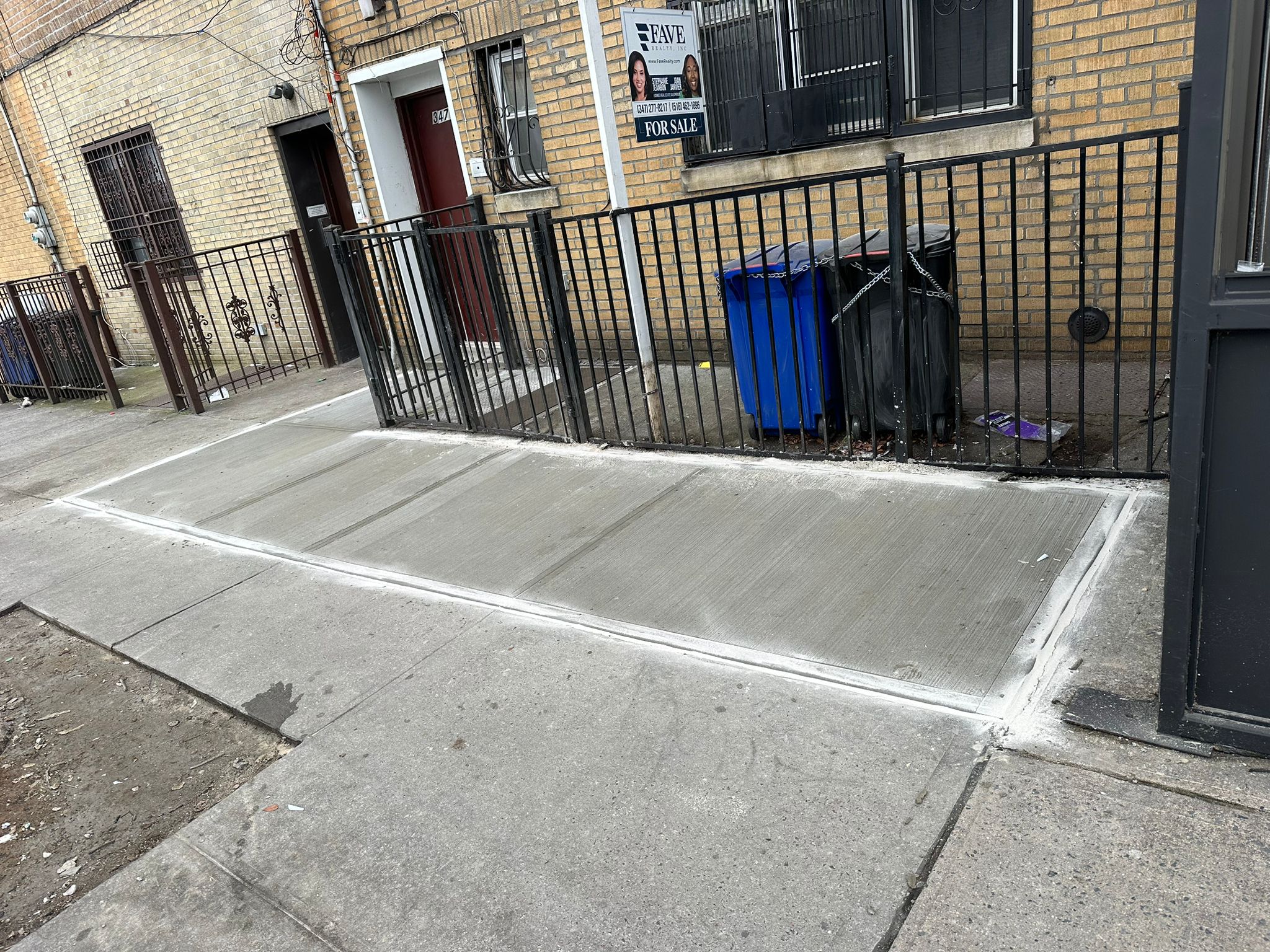Introduction
Concrete is a universal building material in New York City, gracing its skyline with iconic structures and forming the foundation of countless buildings and infrastructure projects. However, the harsh urban environment of NYC, characterized by heavy foot and vehicular traffic, extreme weather fluctuations, and exposure to pollutants, can take a toll on concrete structures over time. This guide aims to address the top 10 common concrete problems encountered in NYC and provide expert insights on how to effectively diagnose and repair them.
1- Causes, Types, and Solutions for NYC Structures
Cracks are perhaps the most prevalent issue faced by concrete structures in NYC. They can stem from various factors such as shrinkage, settlement, structural overloading, or external impacts. To address cracks, it’s crucial to first understand their cause and type. Shrinkage cracks, for instance, are common in newly poured concrete due to water evaporation during the curing process, while settlement cracks occur when the soil beneath the concrete compresses unevenly. Once the type of crack is identified, appropriate repair methods can be employed, ranging from filling with epoxy or polyurethane to more advanced techniques like stitching and doweling.
2- Understanding and Remedying Surface Deterioration
Spalling, characterized by the flaking or chipping of concrete surfaces, often occurs as a result of moisture infiltration, freeze-thaw cycles, or corrosion of embedded reinforcement. In NYC, where freeze-thaw cycles are common during winter months, spalling can be a significant concern. Repairing spalled concrete involves removing deteriorated material and applying suitable patching compounds or protective coatings to prevent further degradation.
3- Strategies for Repair and Protection in NYC
Scaling refers to the loss of surface mortar or concrete, typically caused by exposure to deicing salts, abrasive traffic, or improper finishing techniques during concrete placement. In NYC, where deicing salts are extensively used during winter, scaling can accelerate deterioration. Repair strategies include surface grinding to remove loose material and applying sealers or coatings to enhance durability and protect against future scaling.
4- Protecting Against Corrosion in NYC Structures
Corrosion of reinforcement is a critical issue that compromises the structural integrity of concrete elements. In NYC, where structures are exposed to high levels of moisture and chloride ions from seawater or deicing salts, corrosion can occur rapidly if left unchecked. Repairing corroded reinforcement involves removing rust and damaged concrete, applying corrosion inhibitors, and implementing cathodic protection systems to prevent further corrosion.
5- Managing ASR for Concrete Longevity in NYC
ASR occurs when alkalis in concrete react with certain types of reactive silica aggregates, resulting in gel formation and expansion, which can lead to cracking and deterioration over time. In NYC, where various types of aggregates are used in concrete mixes, ASR poses a significant risk to long-term durability. Mitigation measures include using low-alkali cement, incorporating supplementary cementitious materials, and implementing moisture control strategies during construction.
6- Combatting Frost Damage in NYC Concrete
Freeze-thaw cycles, a common occurrence in NYC’s climate, can cause significant damage to concrete structures by inducing internal pressure and cracking. Properly addressing freeze-thaw damage involves repairing cracks, applying surface treatments to enhance resistance to moisture ingress, and improving drainage to prevent water accumulation and subsequent freezing.
7- Restoring Concrete Integrity in NYC Structures
Aggregate popouts, characterized by the dislodging of coarse aggregate particles from the concrete surface, can occur due to improper mix design, inadequate consolidation, or exposure to freeze-thaw cycles. Repairing popouts involves grinding the surface to remove loose material and applying patching compounds or surface coatings to restore aesthetics and protect against further deterioration.
8- Shielding Concrete Against NYC’s Urban Environment
Chemical exposure from substances such as acids, salts, or alkalis can cause degradation of concrete surfaces, leading to spalling, cracking, or discoloration. In NYC, where concrete structures are exposed to various environmental pollutants and industrial chemicals, protecting against chemical damage is essential. Repairing chemical damage involves cleaning and neutralizing affected areas, applying protective coatings, and selecting chemical-resistant concrete mixes for future construction.
9- Addressing Void Formation in NYC Concrete
Honeycombing refers to voids or air pockets left behind in concrete during the pouring and consolidation process, resulting in reduced structural integrity and aesthetic defects. In NYC, where high-rise construction is prevalent, proper concrete placement techniques are crucial to avoid honeycombing. Repairing honeycombed areas involves grouting and filling voids, patching the surface, and implementing quality control measures to prevent recurrence.
10- Defending Against Water Infiltration in NYC
Water leakage through cracks, joints, or porous concrete can lead to structural damage, mold growth, and indoor air quality issues. In NYC, where heavy rainfall and snowmelt are common, effective waterproofing is paramount. Repairing leaks involves identifying the source of water ingress, sealing cracks and joints, and installing waterproofing membranes or drainage systems to divert water away from the structure.
Conclusion
In conclusion, addressing common concrete problems in NYC requires a proactive approach to maintenance and repair. By understanding the causes and symptoms of concrete deterioration and employing appropriate repair techniques and preventative measures, property owners and managers can prolong the lifespan of their structures and ensure the safety and integrity of the built environment.


